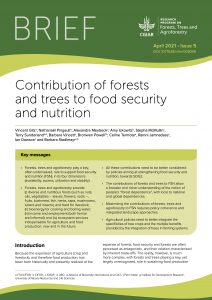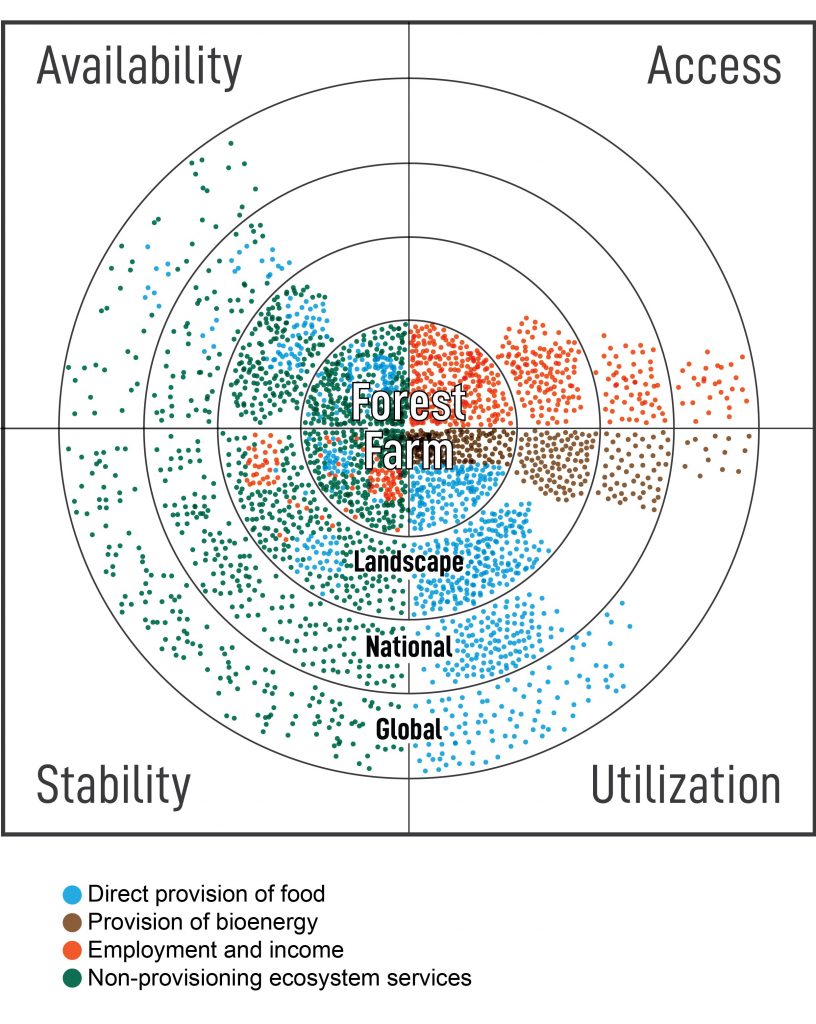FTA just released a Policy Brief titled Contribution of forests and trees to food security and nutrition, which illustrates extensively the many ways through which forests and trees play a key, yet largely unrecognized, role in sustaining food production and food security and nutrition (FSN).

It’s timely publication coincides with the 16th session of the United Nations Forum on Forests (UNFF16) and will be also of relevance to the dialogues of the UN Food Systems Summit, for which FTA has submitted 11-game-changing solutions. Authors hope that this Brief will help shape the discussions and that future policies aiming at achieving SDG2 will better consider the numerous fundamental contributions of forests and trees to FSN. Maximizing these contributions requires policy coherence and integrated landscape approaches. Agricultural policies need to better integrate the specificities of tree crops and the multiple benefits provided by the integration of trees in farming systems.
The document was developed by CIFOR-ICRAF, UBC, The Alliance of Bioversity International and CIAT, Penn State and the University of Natural Resources and Life Sciences in Austria. Forests, trees and agroforestry provide:
- food (such as nuts, oils, vegetables – leaves, flowers, roots –, fruits, bushmeat, fish, herbs, saps, mushrooms, tubers and insects), and feed for livestock,
- bioenergy,
- income and employment, and
- non-provisioning ecosystem services (indispensable for agriculture and food production, now and in the future).
These contributions are then assessed in relation to the 4 dimensions of FSN (availability, accessibility, utilization and stability) with a detailed analysis of the complex inter-relationships between these dimensions and contributions. The paper embraces the wide diversity of forests and systems with trees, including agricultural tree crops and agroforestry systems.

Finally, the brief analyzes how the contributions of forests and trees to FSN and their variations by regions, social groups, households and even within households can help to further enrich (through FSN dimensions) the concept of “dependence on forests and trees” with local to national and global dependences.
It highlights the importance of having indicators measuring the contributions of forests and trees to FSN integrated in the assessment of polices and welcomes the progress made in that regard in the Global Core Set of indicators initiated by the CPF, thanks to the leadership of the UNFF and FAO.
The paper ends with a set of very clear recommendations, inviting policy makers to address all the relevant criteria to improve FSN and reach SDG2, with a focus on nutrition as well as on gender, indigenous peoples and vulnerable groups. Policies based only on producing more food risk to develop undesired and detrimental effects on food security and nutrition, social equity and environmental sustainability.
This article was produced by the CGIAR Research Program on Forests, Trees and Agroforestry (FTA). FTA is the world’s largest research for development program to enhance the role of forests, trees and agroforestry in sustainable development and food security and to address climate change. CIFOR leads FTA in partnership with ICRAF, The Alliance of Bioversity and CIAT, CATIE, CIRAD, INBAR and TBI. FTA’s work is supported by the CGIAR Trust Fund.











